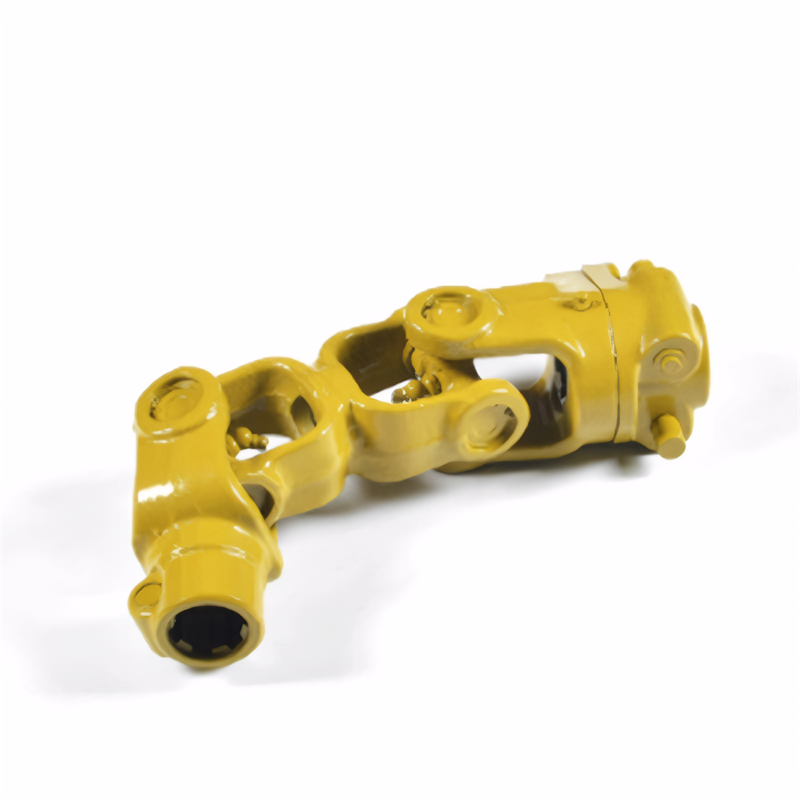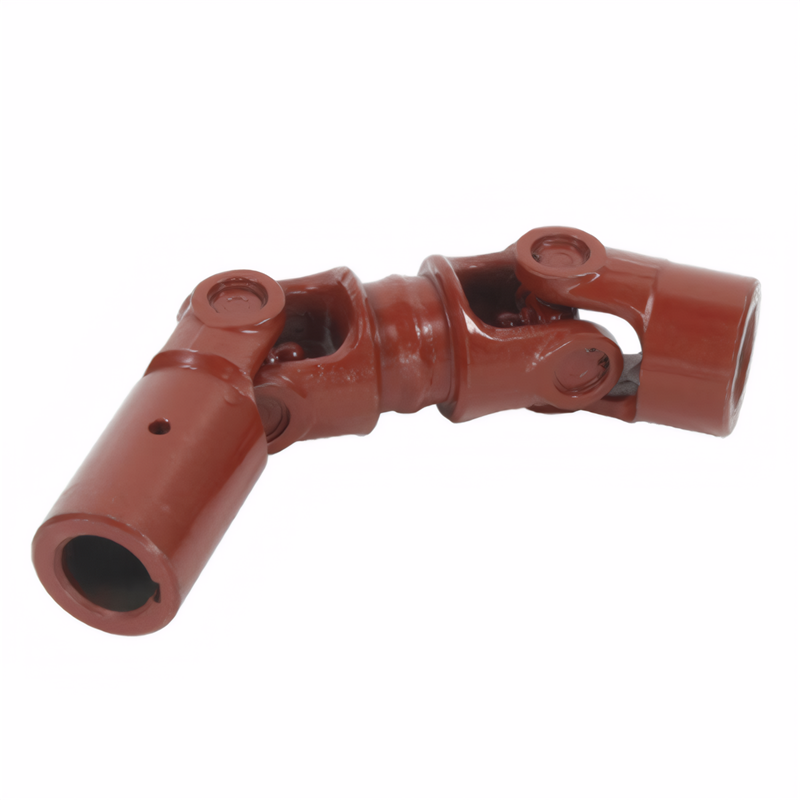What are the advantages and disadvantages of the four major mechanical drives?
At present, none of the four types of transmission modes (mechanical, electrical, hydraulic and pneumatic) is perfect. This time, analyze their respective advantages and disadvantages one by one!
mechanical drive
1. Gear transmission
Include plane gear transmission and space gear transmission.
Advantages:
Wide range of applicable circumferential speed and power;
The transmission ratio is accurate, stable and efficient;
High working reliability and long service life;
Transmission between parallel shafts, arbitrary angle intersecting shafts and arbitrary angle staggered shafts can be realized.
2. Turbo-rod transmission
It is suitable for the motion and power between two vertical and non-intersecting axes in space.
Advantages:
Large transmission ratio;
Compact structure and size.
Disadvantages:
Large axial force;
Easy to get hot;
Low efficiency;
Only one-way transmission.
The main parameters of turbo-rod drive are:
Modulus; Pressure angle; Worm gear indexing circle; Worm indexing circle; Lead; Worm gear number; Number of worm heads; Transmission ratio, etc.
3. Belt drive
Comprises a driving wheel, a driven wheel and an endless belt.
It is used in the situation where two axes are parallel and rotate in the same direction, which is called the concept of opening movement, center distance and angle. According to the cross-sectional shape, the types of belts can be divided into three categories: flat belt, V belt and special belt.
The key points in application are: calculation of transmission ratio; Stress analysis and calculation of the belt; Allowable power of single v-belt.
Advantages:
Suitable for transmission with large center distance between two shafts;
The belt has good flexibility, which can alleviate impact and absorb vibration;
Slip when overloaded to prevent damage to other parts;
Simple structure and low cost.
Disadvantages:
The outer dimension of the transmission is large;
Need to tighten the device;
Due to slippage, the fixed transmission ratio cannot be guaranteed;
The life of the belt is short;
The transmission efficiency is low.
4. Chain drive
Comprise a driving chain, a driven chain and an endless chain.
Compared with gear transmission, chain transmission has the following main features:
The manufacturing and installation accuracy requirements are low;
When the center distance is large, its transmission structure is simple;
The instantaneous chain speed and instantaneous transmission ratio are not constant, so the transmission stability is poor.
Second, the electrical
1, high accuracy
As the power source, servo motor is composed of ball screw and synchronous belt, which has simple structure and high efficiency. Its repeatability error is 0.01%.
2. Save energy
The energy released in the deceleration stage of the working cycle can be converted into electric energy for reuse, thus reducing the operating cost, and the connected electric equipment is only 25% of the electric equipment required for hydraulic drive.
3. Precision control
According to the set parameters, with the support of high-precision sensors, metering devices and computer technology, it can greatly exceed the control accuracy that other control methods can achieve.
4, improve the level of environmental protection
Due to the reduction of energy varieties and their optimized performance, pollution sources and noise are reduced, which provides a better guarantee for the environmental protection work of the factory.
5. Reduce noise
Its operating noise value is less than 70 decibels, which is about 2/3 of that of the hydraulic injection molding machine.
6. Save costs
This machine eliminates the cost of hydraulic oil and the troubles caused by it. There is no hard pipe or soft throat, and it is not necessary to cool the hydraulic oil, which greatly reduces the cost of cooling water.
Third, hydraulic pressure
1. advantages
1) From the structural point of view, its output power per unit weight and output power per unit size are overwhelming among the four types of transmission modes, with a large moment-inertia ratio. Under the condition of transmitting the same power, the hydraulic transmission device is small in size, light in weight, small in inertia, compact in structure and flexible in layout.
2) In terms of working performance, the speed, torque and power can be adjusted steplessly, with quick action response, quick commutation and speed change, and wide speed regulation range, ranging from 100: L to 2000: 1; Good action rapidity, simple control and adjustment, convenient and labor-saving operation, easy to cooperate with electrical control, and easy to connect with CPU (computer) to realize automation.
3) From the point of view of use and maintenance, the element has good self-lubricity, is easy to realize overload protection and pressure maintenance, and is safe and reliable; Components are easy to realize serialization, standardization and generalization.
4) All equipment with hydraulic technology is safe and reliable.
5) Economy: Hydraulic technology has strong plasticity and variability, which can increase the flexibility of flexible production and make it easy to change and adjust production procedures. Relatively speaking, the manufacturing cost of hydraulic components is not high and the adaptability is strong.
6) The combination of hydraulic pressure and new technologies such as microcomputer control has become the trend of world development, and it is convenient to realize digitalization.
2. Disadvantages
Everything is divided into two parts, and hydraulic transmission is no exception.
1) The hydraulic transmission inevitably leaks due to the relative moving surface, at the same time, the oil is not absolutely incompressible, and the oil pipe is elastically deformed, so the hydraulic transmission can't get a strict transmission ratio, so it can't be used in the inline transmission chain of machine tools such as machining threaded gears.
2) There are edge loss, local loss and leakage loss in the process of oil flow, and the transmission efficiency is low, which is not suitable for long-distance transmission.
3) Under the conditions of high temperature and low temperature, it is difficult to adopt hydraulic transmission.
4) In order to prevent oil leakage and meet some performance requirements, the manufacturing accuracy of hydraulic components is high, which brings certain difficulties to use and maintenance.
5) It is difficult to check faults, especially in units where hydraulic technology is not very popular, which often hinders the further popularization and application of hydraulic technology. Hydraulic equipment maintenance needs to rely on experience, and it takes a long time to train hydraulic technicians.
Fourth, the air pressure
1. advantages
1) Taking air as the working medium, the working medium is easy to obtain, and the used air is discharged into the atmosphere, which is convenient to handle. Compared with hydraulic transmission, there is no need to set up a recovered oil tank and pipeline.
2) Because the viscosity of air is very small (about one ten thousandth of the dynamic viscosity of hydraulic oil), its loss is also very small, so it is convenient for centralized gas supply and long-distance transportation. External leakage will not pollute the environment as seriously as hydraulic transmission.
3) Compared with hydraulic transmission, pneumatic transmission has the advantages of quick action, quick response, simple maintenance, clean working medium and no problems such as medium deterioration.
4) Good adaptability to working environment, especially in the harsh working environment such as inflammable, explosive, dusty, strong magnetic, radiation and vibration, which is superior to hydraulic, electronic and electrical control.
5) Low cost and automatic protection against overload.
2. Disadvantages
1) Due to the compressibility of air, the stability of working speed is slightly poor. However, the gas-liquid linkage device will get satisfactory results.
2) Due to the low working pressure (generally 0.31.0MPa) and the structure size should not be too large, the total output force should not be greater than 10 ~ 40 kN.
3) The noise is high, and a muffler should be added during high-speed exhaust.
4) The transmission speed of pneumatic signals in pneumatic devices is slower than that of electrons and light speed within the speed of sound, so the pneumatic control system is not suitable for complex circuits with too many components.
 The correct installation seque
The correct installation seque
 Maintenance measures for drive
Maintenance measures for drive
 Precautions for the maintenanc
Precautions for the maintenanc
 The process of balance correct
The process of balance correct
 简体中文
简体中文 English
English
